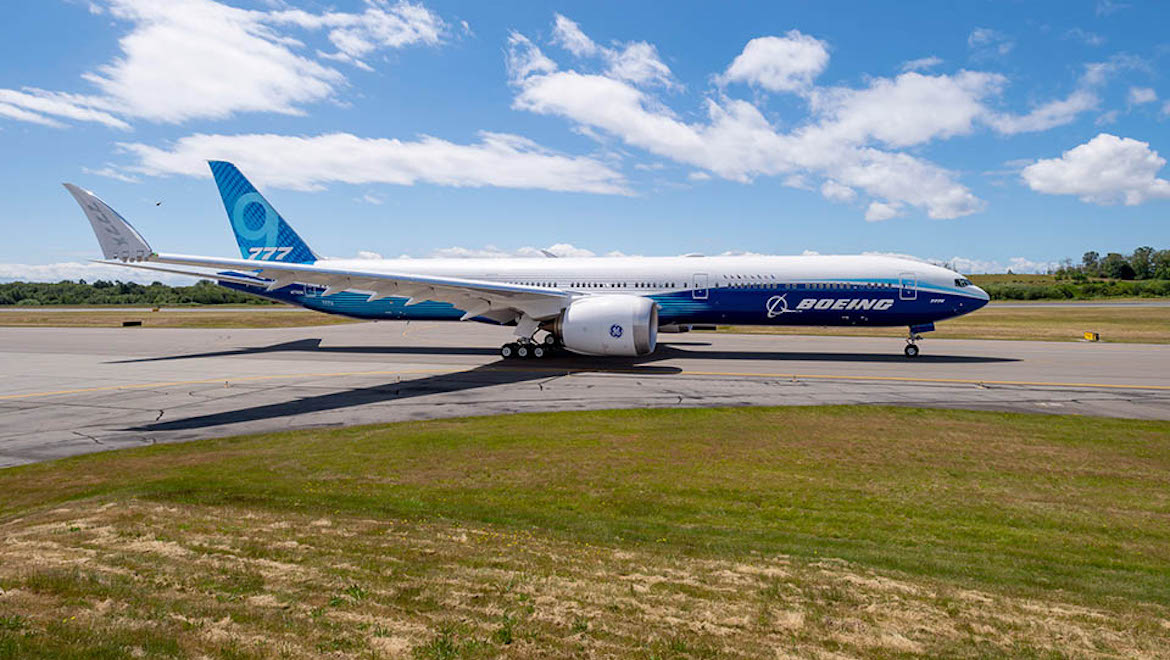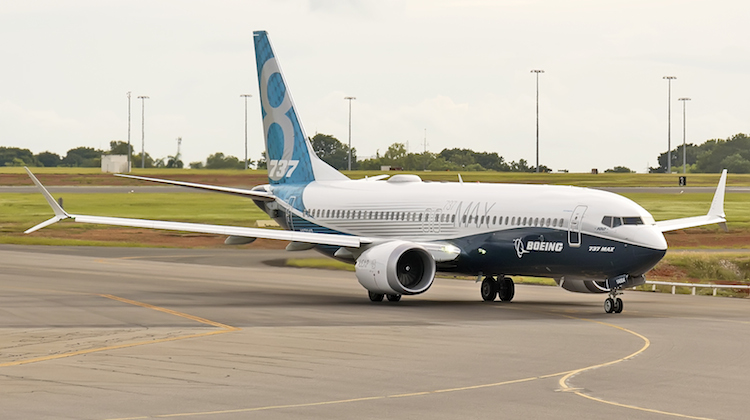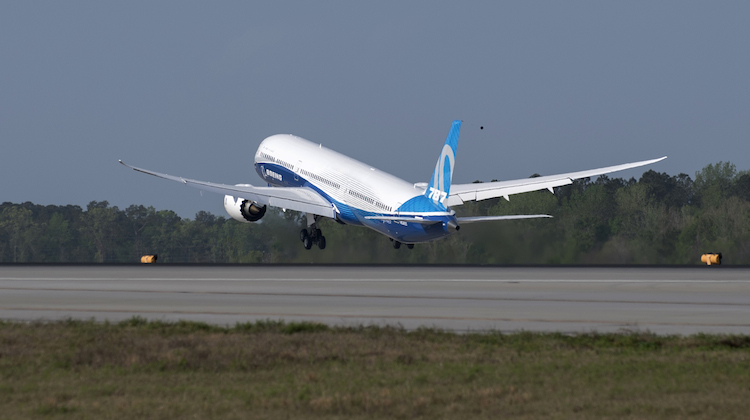
Boeing has pushed back first delivery of its 777-X program from mid-2020 to early 2021 due to flight-testing delays caused by ongoing engine issues and more recently, a door blowing off during stress testing.
A new flight-compliant GE9X engine was delivered to Boeing in August after durability problems, discovered during testing late in northern hemisphere summer, centered on the stator vanes in the compressor were fixed.
Boeing chief executive Dennis Muilenburg told analysts and media during the company’s third-quarter earnings presentation in Chicago on Wednesday (US time) that since addressing the impact from the GE9X engine and associated risk, first delivery of the 777-9X was now expected in early 2021. German carrier Lufthansa is the launch customer for the Boeing 777-9X.
Emirates, Qatar Airways, Cathay Pacific, All Nippon, Singapore Airlines, Etihad Airways and British Airways have all made substantial orders for the Boeing 777-9X.
“We continue to progress in our [777-X] preflight testing, focusing on final systems propulsion and airplane-level test,” Muilenburg said.
The GE9X engine remains the pacing item, as we work towards first flight of the 777-X.
“GE has installed retrofit components in the certification test engines and testing has restarted. Once the engines become available, GE and Boeing will need to successfully complete additional testing before we are ready to fly.”
Muilenburg said the company still expected the first flight to take place in in early 2020. It was initially planned for the first half of 2019.
“We continue to explore opportunities to improve the time line, such as leveraging our system integration labs and additional airplane ground testing consistent with our commitment to safety,” Muilenburg said.
Muilenburg also said lessons learned from the 737 MAX situation such as revisions to the certification timelines or procedures, might have applications for the 777-X.
737 MAX update
The Manoeuvering Control Augmentation System (MCAS) software in the 737 MAX’s on-board flight control system has been implicated in the crash of Lion Air flight 610 in October 2018 and Ethiopian Airlines flight 302 in March 2019 that killed 346 people.
Boeing said it had conducted 800 tests and production flights totalling more than 1,500 hours with updated MCAS software following feedback from global regulators and 737 MAX operators.
Muilenburg said Boeing would complete additional testing of the software update and conduct simulator evaluations and reviews leading up to a certification flight with the US Federal Aviation Administration (FAA) onboard.
“We have hosted 545 participants for more than 140 customers and regulators around the globe to experience the software updates in our simulator sessions,” Muilenburg said.
Spotted on the flightline — our #777X extending its wingtips in the Seattle sun! Our teams will continue ground tests in the weeks ahead as we develop our newest twin-aisle jet. pic.twitter.com/Mo6mUndSoD
— Boeing Airplanes (@BoeingAirplanes) June 19, 2019
“We have also conducted 20 global conferences with more than 1,100 participants from more than 250 organisations to help operators and financiers prepare for return to service and provide them the opportunity to ask questions for our teams.”
Further, Muilenburg said Boeing had invested in enhanced flight simulation and computing capabilities, increasing the ability to proactively test a wide range of scenarios resulting in improved product safety.
“Advanced research and development efforts in future flight decks are also underway, leveraging leading-edge work in human factors, science and design,” he said.
Muilenburg reaffirmed that Boeing expected the 737 MAX to return to the air before the end of 2019, but he cautioned that if there were any changes to the anticipated return to service they could cause the company to to consider reducing the present production rate of 42 planes a month or to temporarily shutdown the MAX production line.

Results
The seven-month global grounding of 737 MAX fleets following the two fatal crashes continued to take its toll on Boeing’s bottom line, with the company reporting net earnings, or net profit of US$1.167 billion (A$1.704b) for the three months to September 30 2019, down 51 per cent from US$2.36 billion in the prior corresponding period.
Boeing said Defence and Space orders helped offset the fall in revenues from its Commercial Airplanes business because of a freeze in 737 MAX deliveries. Revenue across the group fell 21 per cent to US$19.98 billion (A$29.18 billion) in the three months to September 30 2019, compared with the previous year’s third quarter.
Trade tension
Boeing ended the third quarter with a backlog of about 5,500 aircraft orders worth US$387 billion at list prices.

Muilenburg said trade tension between China and the US was putting near-term pressure on widebody production rates, especially 787 aircraft.
“As part of our practice for a significant market such as China, we have forecasted orders from operators based on the country as part of our skyline assumptions,” Muilenburg said.
“The lack of orders from China in the past couple of years has put pressure on the production rate.”
Boeing said it would cut the production rate of its 787 program from 14 a month currently to 12 aircraft a month “for approximately two years” from late 2020.
The 787 production rate was lifted to 14 aircraft a month earlier in 2019.










